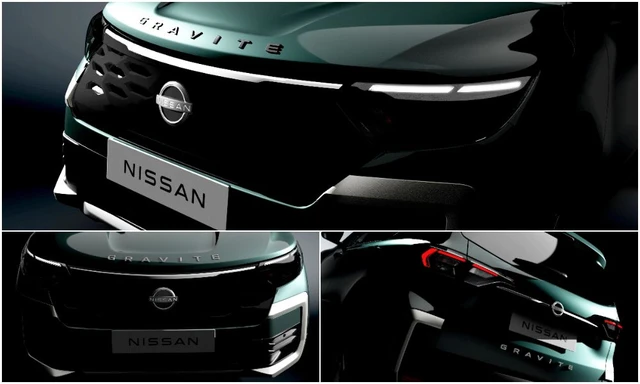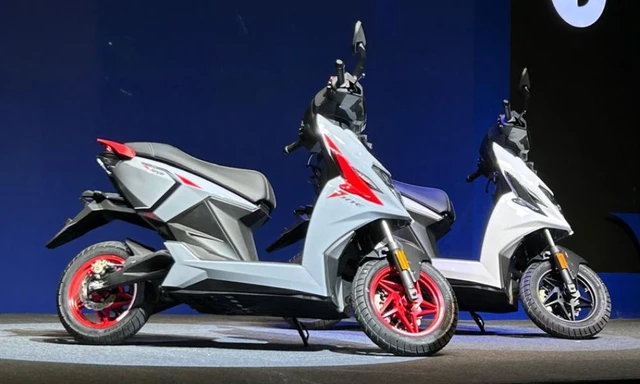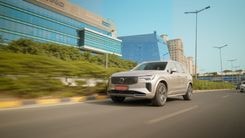Volvo Cars Safety Centre Celebrates 20 Years

Volvo has always been at the forefront of safety and it's taken various initiatives to make changes that were later standardised in the auto industry. And Volvo has made strides in this department by opening up a Safety Centre crash lab two decades ago. This year it celebrates its 20th anniversary. At the time of its opening by the Swedish king, in 2000, it was one of the most advanced crash labs in the world and in many ways it still is today.
Also Read: 2021 Volvo S60 India Launch Details Out; Bookings To Begin In January 2021

On average, it crashes at least one brand new Volvo a day
To this very day it helps Volvo Cars engineers to push the envelope in safety and to learn from real-life traffic accidents, as the company aims for a future in which no one is killed or seriously injured in a new Volvo. On average, it crashes at least one brand new Volvo a day
Thomas Broberg, Safety Engineer, Volvo Cars and company veteran said, "Our commitment to safety is about finding out how and why accidents and injuries occur and then developing the technology to help prevent them. We hope our pioneering work will inspire others to follow, our ambition to reduce road traffic casualties world wide."
The Volvo Cars Safety Centre crash lab is a multifunctional facility that allows Volvo Cars safety engineers to recreate countless traffic situations and accidents, and perform tests that go beyond regulatory requirements.
The lab contains two test tracks of 108 and 154 metres long respectively. The shorter of the two is moveable and can be positioned at an angle between 0 and 90 degrees, allowing for crash test at different angles and speeds, or to simulate a crash between two moving cars. Cars can be crashed at speeds up to 120 kmph.
Outside, there is room for performing tests like roll-over crashes and run-off road scenarios, whereby cars are launched into a ditch at high speeds. Here, Volvo Cars also offers rescue services opportunities to hone their life-saving skills, as it did earlier this year when it dropped new Volvos from a height of 30 metres to simulate the heavy damage found in extreme crash scenarios.

All the data generated by these test is then used by Volvo's engineers to develop safer cars.
Inside the main hall, an enormous crash barrier is used for testing various frontal, rear and side impacts. Weighing an astonishing 850 tonnes, it can be moved around if needed with the help of air cushions.
Also Read: All-Electric Volvo XC40 Recharge Coming To India In 2021
Additionally, there are around two dozen other fixed and movable barriers that are used in crash testing, including a moose-like structure to simulate crashes involving these animals.
During crashes, the car, the crash test dummies and the barriers are fitted with sensors that allow Volvo Cars engineers to register the entire chain of events in detail. Dozens of ultra-high definition cameras also film the crash test from every angle imaginable.
Before a physical crash test, the car model in question has already gone through thousands of computer simulated crash tests. All the data generated by these test is then used by Volvo's engineers to develop safer cars.
As the company moves towards an all-electric future, the Safety Centre has in recent years been equipped and prepared specifically to safely execute electric car crash tests as well.
Latest News
 Jaiveer Mehra | Jan 6, 2026Mahindra XUV 3XO EV Launched In India; Prices Start At Rs 13.89 LakhEssentially the successor to the XUV 400 EV, the 3XO EV is offered in two trim levels and solely with a 39.4 kWh battery.1 min read
Jaiveer Mehra | Jan 6, 2026Mahindra XUV 3XO EV Launched In India; Prices Start At Rs 13.89 LakhEssentially the successor to the XUV 400 EV, the 3XO EV is offered in two trim levels and solely with a 39.4 kWh battery.1 min read Jaiveer Mehra | Jan 6, 2026Nissan Tekton SUV World Premiere On February 4The Tekton will make its debut hot on the heels of the Gravite and will share its platform with the upcoming new Duster.1 min read
Jaiveer Mehra | Jan 6, 2026Nissan Tekton SUV World Premiere On February 4The Tekton will make its debut hot on the heels of the Gravite and will share its platform with the upcoming new Duster.1 min read car&bike Team | Jan 6, 2026New Bajaj Chetak With Hub Motor To Be Launched On January 14Expected to be positioned as a more affordable derivative of the iconic Bajaj scooter, the newest member of the Chetak family will be targeted at the TVS Orbiter and Vida VX2.2 mins read
car&bike Team | Jan 6, 2026New Bajaj Chetak With Hub Motor To Be Launched On January 14Expected to be positioned as a more affordable derivative of the iconic Bajaj scooter, the newest member of the Chetak family will be targeted at the TVS Orbiter and Vida VX2.2 mins read Jaiveer Mehra | Jan 6, 2026Nissan Gravite MPV To Debut On January 21B-segment MPV to share its underpinnings and powertrain options with the Renault Triber.1 min read
Jaiveer Mehra | Jan 6, 2026Nissan Gravite MPV To Debut On January 21B-segment MPV to share its underpinnings and powertrain options with the Renault Triber.1 min read Jaiveer Mehra | Jan 6, 2026Mahindra XUV 7XO Prices, Variants ExplainedFacelifted SUV is offered in a choice of six variants and with petrol and diesel engine options.1 min read
Jaiveer Mehra | Jan 6, 2026Mahindra XUV 7XO Prices, Variants ExplainedFacelifted SUV is offered in a choice of six variants and with petrol and diesel engine options.1 min read car&bike Team | Jan 5, 2026Updated Simple One Electric Scooter Launched At Rs 1.50 Lakh; 5 kWh Variant Promises Up To 265 KM RangeWith a series of changes made to the existing scooter, the start-up claims to have improved range, top speed as well as on-road behaviour of the Simple One.1 min read
car&bike Team | Jan 5, 2026Updated Simple One Electric Scooter Launched At Rs 1.50 Lakh; 5 kWh Variant Promises Up To 265 KM RangeWith a series of changes made to the existing scooter, the start-up claims to have improved range, top speed as well as on-road behaviour of the Simple One.1 min read
 Amaan Ahmed | Jan 3, 2026VLF Mobster 135 300 KM Review: Fun But FlawedA 125 cc scooter with Italian design and Chinese genes is a rare combination, and while some may be tempted to dismiss it because of its origins, the VLF Mobster shows 125s can also be exciting – but not without compromises.11 mins read
Amaan Ahmed | Jan 3, 2026VLF Mobster 135 300 KM Review: Fun But FlawedA 125 cc scooter with Italian design and Chinese genes is a rare combination, and while some may be tempted to dismiss it because of its origins, the VLF Mobster shows 125s can also be exciting – but not without compromises.11 mins read Preetam Bora | Dec 30, 2025TVS Orbiter Review: Real-World Performance and Range TestedThe TVS Orbiter is a promising electric scooter promising decent range, practicality and pricing. But is there any reason to avoid it? We spent a few days getting to know it better.9 mins read
Preetam Bora | Dec 30, 2025TVS Orbiter Review: Real-World Performance and Range TestedThe TVS Orbiter is a promising electric scooter promising decent range, practicality and pricing. But is there any reason to avoid it? We spent a few days getting to know it better.9 mins read Jafar Rizvi | Dec 24, 2025MG Windsor EV 38 kWh Long-Term Report: IntroductionThe Windsor EV has joined our garage, and before it settles into daily duty, I took it out to get a sense of what living with an electric car is like.4 mins read
Jafar Rizvi | Dec 24, 2025MG Windsor EV 38 kWh Long-Term Report: IntroductionThe Windsor EV has joined our garage, and before it settles into daily duty, I took it out to get a sense of what living with an electric car is like.4 mins read Seshan Vijayraghvan | Dec 23, 20252026 Kia Seltos Review: Formula Is Spot On, But Is The Timing Right?The 2nd-gen Kia Seltos has arrived, but it has the challenge of facing strong rivals like the Victoris and Sierra. The question is simple - Does it still have what it takes?9 mins read
Seshan Vijayraghvan | Dec 23, 20252026 Kia Seltos Review: Formula Is Spot On, But Is The Timing Right?The 2nd-gen Kia Seltos has arrived, but it has the challenge of facing strong rivals like the Victoris and Sierra. The question is simple - Does it still have what it takes?9 mins read car&bike Team | Dec 26, 2025Tata Punch EV Long-Term Second Report: Highway Performance, Pros & ConsAfter a week of living with the Tata Punch EV Long Range—including a proper Mumbai-Nashik highway test—we've learned what this little electric SUV is really made of.1 min read
car&bike Team | Dec 26, 2025Tata Punch EV Long-Term Second Report: Highway Performance, Pros & ConsAfter a week of living with the Tata Punch EV Long Range—including a proper Mumbai-Nashik highway test—we've learned what this little electric SUV is really made of.1 min read


























































































































